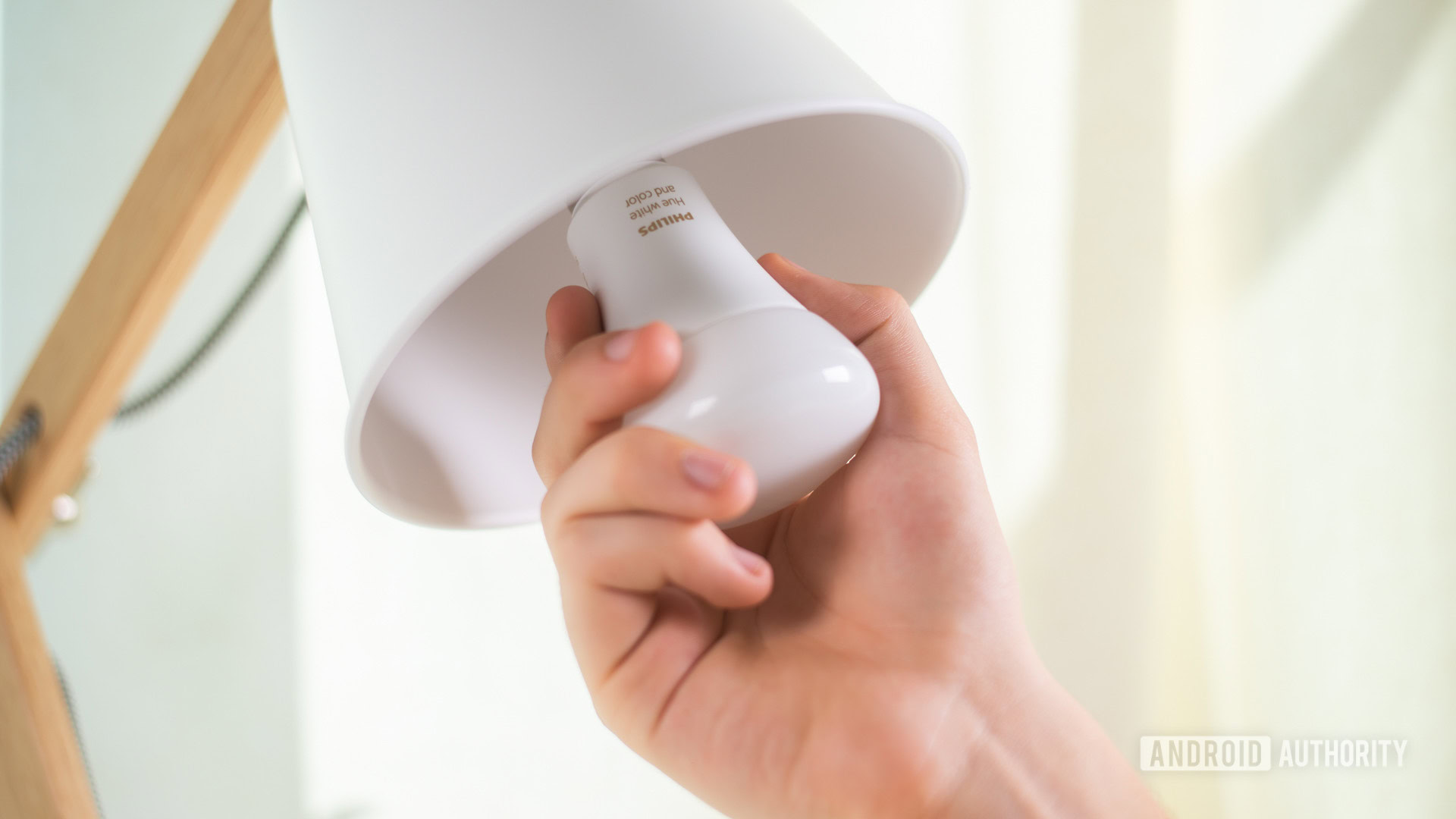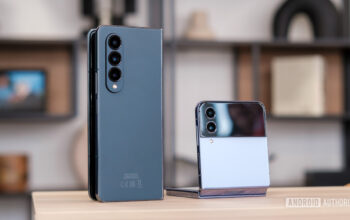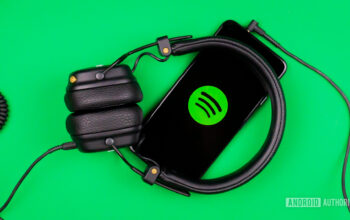
Edgar Cervantes / Android Authority
I have always been attracted to light. I naturally wake up to it every morning and I start winding down with it in the evening. Dim rooms, gloomy weather, and short winter days; none of these are my favorites. So when I moved from sunny and Mediterranean Lebanon to cloudy Paris about a year ago, I knew I was in for a bit of a shock to the system. But I had one tool in the box that I believed would help fix my sleeping and waking up pattern: Philips Hue lights.
Technically speaking, what I’m about to explain to you can be done with many other smart lights, and might be even easier or more customizable on other platforms. So why Hue? Simply speaking, I already own the hub and lights, so I used them. I picked them up a few years ago while building my smart home because of their power-on behavior setting and non-Wi-Fi connectivity. (I lived in an area with many power cuts and slow network connectivity.)
Our picks: The best smart light bulbs you can buy
Going back to my issue with natural light in Paris, my main concern was my inability to adapt to shorter winter and longer summer days. Once those concerns became a reality, I quickly set up my Hue lights to fix them. Here’s how.
Waking up on dark winter mornings
I’m used to waking up between 7 and 8 AM from natural light, drinking some water, and being ready to tackle the day. No alarm, no endless snoozing cycles, no coffee. Come November, it became clear that that was no longer possible. I was waking up groggier and less refreshed; both my body and brain weren’t on top of their game. I was even startled by my husband’s 8:30 AM alarm a few times. The reason is that sunrise time slowly pushes forward and forward until it gets to around 8:40 AM during the winter equinox in Paris. So how am I supposed to wake up from natural light around 8 AM if it’s still dark as night outside?
Enter the sunrise mode on smart lights, or as Hue likes to call it, the “Wake up with light” automation. I set it up with our bedroom light and chose it to fade in from 8 AM to 8:30 AM. While this was efficient at waking me up, it did so a little brutally (I was often up by 8:05 or 8:10 AM) with lights that were too bright and got brighter as the thirty minutes of fading progressed.
Let us guide you: How to get started setting up Philips Hue
Looking for more granular controls, I dug into the rather hidden Hue Labs section and discovered the Personal wake-up formula that is much more customizable. This allowed me to pick the scene I preferred to wake up to (a natural-to-warm light is best), the maximum brightness I wanted the bulb to reach (70% is more than enough for me), and the fade-in duration. I’m not sure why exactly, but I realized a shorter 15-minute fade duration was better than a longer 30-minute one.
And with that simple step, like clockwork, the bedroom light came on at 8 AM every morning, then grew in intensity for 15 minutes to reach 70%. And like clockwork, I woke up every weekday morning between 8:00 and 8:15 AM. Magic. The grogginess didn’t completely go away, but it was significantly reduced compared to the pre-Hue wake-up days.
Like clockwork, the bedroom light comes on at 8 AM and I naturally wake up as it fades to 70% brightness.
Now to be clear, this isn’t a solution for everyone. My never-a-morning-person husband who sleeps next to me in the same bed and needs multiple alarms and reminders to get out of bed didn’t see the same magical results, but he did stir and start waking up by 8:15 AM almost every day. Before we turned on the routine, he would still be steadfastly asleep by then.
Winding down on bright summer evenings
The opposite situation happens in the summer. Days are a lot longer than I’m used to, and I often find myself surprised to look at the clock and see it’s already 10 PM while it’s still bright outside. Sunset here in Paris happens on average two hours later than what I was used to in Lebanon. I can’t possibly go to bed at 11 PM or even at midnight when my body is still fully alert and not yet ready to wind down.
We recommend: The best smart home gadgets
Hue offers a regular “Go to sleep” automation, but once again, it wasn’t customizable enough for me. I wanted more control over my lights and multiple stages of winding down. I also had to make sure that this would only trigger when the lights are already on instead of firing off every day, regardless of whether or not we were home or the lights were off. For that, I dug into Hue Labs again and found the Time-based light formula.
This one is a lot more intricate than the default sleep automation. It allows me to divide the entire day into five separate chunks, each with a different scene. When the lights are on in my living room — and only if they’re on — they automatically transition through the scenes at the five preset times. In the morning, they’re white and at 70%. During the day, they switch to full brightness because this is where my desk and office are. After work, they go back to a 70% white scene. By 8:30 PM, they switch to a relaxed and warm hue at 60%. And finally, come 11:30 PM, they dim down to 30% brightness. The fade duration is customizable, so the transition doesn’t feel jarring at all.
As the living room lights automatically switch to a warm color at 30% brightness, I start relaxing and getting sleepy.
The last 30% warm scene is the one that does the trick for me. It relaxes me and tells my body that it’s about time to sleep. Although it worked from the first evening, I find that it’s not as foolproof as the wake-up routine, because sometimes I’m still too amped up or I’m watching an interesting TV series and I can’t fight the urge to binge one more episode, but that’s on me. Anyway, it has had a higher success rate at making me get up and go to bed around midnight compared to relying on outdoor light and leaving the indoor ones untouched at full brightness.
Have you used wake-up or sleep routines with your smart lights?
26 votes
These small features make all the difference between a gimmicky “smart” light that just changes colors and can be controlled via an app or voice assistant and a proper smart light that can help you throughout the day. I love that I can set these and forget them, then let my lights do their thing without any intervention on my end. The only time I had to tinker with them was to turn off the wake-up routine when I was traveling and when the winter days were over.
Your smart lights changing hue and brightness throughout the day should be a default feature, not a last-minute addition hidden in an obscure place.
However, I’m a bit annoyed that both of these features are hidden deep in the Labs section where you really have to go digging for them. The Labs interface isn’t the most intuitive either — if you don’t hit the Update button, your changes don’t register; and if you set up a formula but don’t turn it on, it doesn’t work. Your smart lights changing hue and brightness throughout the day should be a default feature, not a second-thought addition hidden in an obscure place.
Up next: How I consolidated my smart home using Home Assistant



